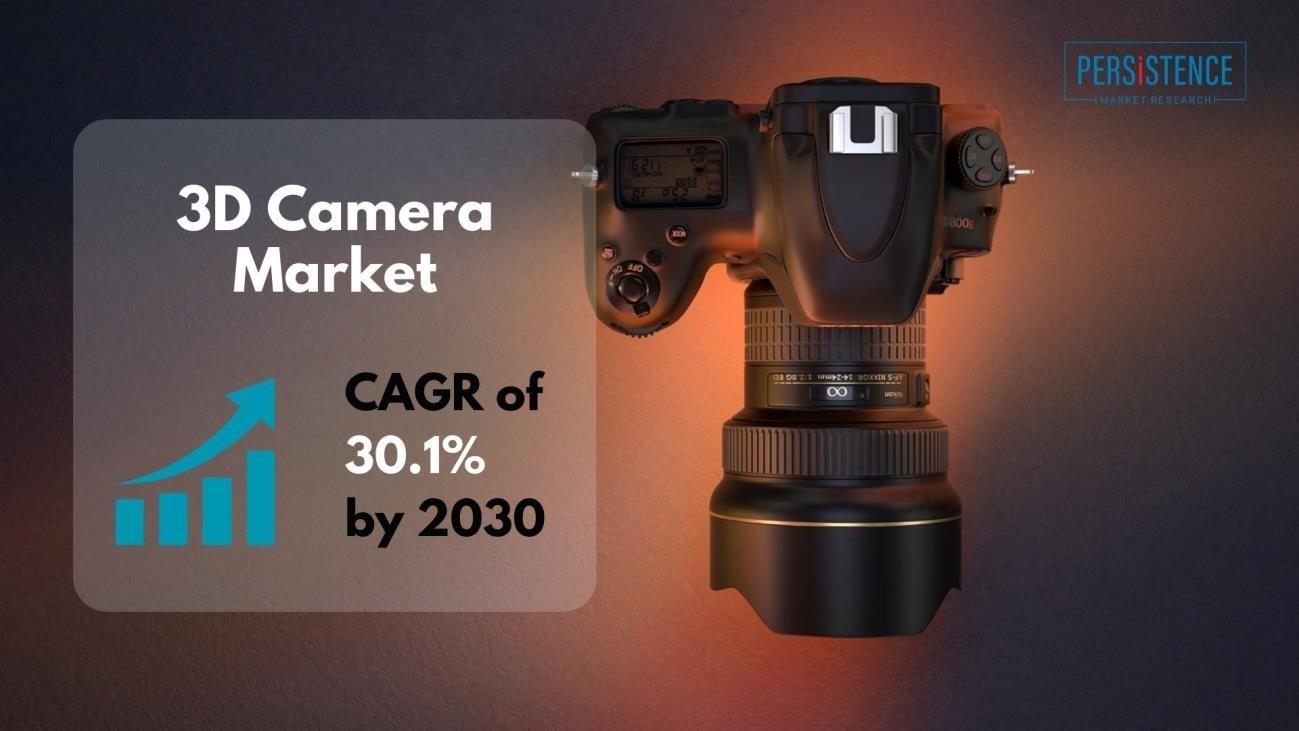Market Overview:
The 3D camera market is undergoing a transformative phase, fueled by rapid technological advancements and the increasing demand for immersive experiences across various industries. From entertainment and healthcare to automotive and manufacturing, 3D cameras have emerged as versatile tools, enabling enhanced depth perception and spatial understanding. This article delves into the current state of the 3D camera market, explores key trends and innovations, and provides insights into the future prospects of this dynamic industry.
The 3D camera market has witnessed substantial growth in recent years, driven by a surge in applications across diverse sectors. Traditional imaging technologies have evolved into sophisticated 3D solutions, offering enhanced depth perception and a more immersive user experience. The market encompasses various types of 3D cameras, including time-of-flight (ToF) cameras, structured light cameras, stereoscopic cameras, and LiDAR-based cameras, each catering to specific use cases.
3D cameras are imaging devices capable of capturing three-dimensional images, enabling depth perception and spatial understanding. They find applications in industries such as entertainment, automotive, healthcare, consumer electronics, and robotics. The global 3D camera market is forecaste to expand at a CAGR of 30.1% and thereby increase from a value of approximately US$21 Bn in 2023, to US$140.3 Bn by the end of 2030. The increasing demand for 3D content in entertainment, virtual reality (VR), augmented reality (AR), and 3D printing is driving market expansion.

Key Drivers of Growth:
Several factors contribute to the growth of the 3D camera market. The increasing demand for 3D content in gaming and entertainment, coupled with advancements in augmented reality (AR) and virtual reality (VR) technologies, has fueled the adoption of 3D cameras. Additionally, the
integration of 3D cameras in smartphones for facial recognition, gesture control, and improved photography capabilities has significantly expanded the consumer market.
In the industrial sector, the rise of automation and robotics has driven the adoption of 3D cameras for applications such as quality control, object recognition, and robotic navigation. The automotive industry, particularly in the development of autonomous vehicles, relies heavily on 3D cameras, LiDAR, and other depth-sensing technologies for accurate environmental perception.
To gain additional insights@
https://www.persistencemarketresearch.com/marketresearch/3d-camera-market.asp
Technological Advancements:
The evolution of 3D camera technology is marked by continuous innovation. Time-of-flight (ToF) cameras have gained prominence due to their ability to capture depth information with high precision and speed, making them suitable for applications such as facial recognition and AR. Structured light cameras, leveraging projected patterns to capture depth, find applications in 3D scanning and industrial automation.
LiDAR technology, originally developed for remote sensing and geospatial applications, has found a robust market in autonomous vehicles. Solid-state LiDARs, in particular, are gaining traction for their compact form factor and improved reliability, addressing some of the challenges associated with traditional mechanical LiDAR systems.
Industry Applications:
The applications of 3D cameras span a wide range of industries. In healthcare, 3D cameras are used for surgical planning, patient monitoring, and diagnostic imaging. The gaming and entertainment industry leverages 3D cameras for creating immersive virtual environments and enhancing user interactions. In manufacturing and construction, 3D cameras aid in quality control, inspection, and monitoring of production processes.
The automotive sector incorporates 3D cameras for advanced driver-assistance systems (ADAS) and autonomous vehicles. In retail, 3D cameras enable virtual try-on solutions and personalized shopping experiences. Security and surveillance benefit from 3D cameras for accurate object recognition and tracking.
Market Challenges:
Despite the positive trajectory, the 3D camera market faces certain challenges. Cost constraints associated with manufacturing high-quality 3D cameras remain a hurdle, particularly for widespread consumer adoption. Interoperability issues, standardization concerns, and privacy considerations related to the collection of 3D data also pose challenges that the industry must address.
Future Outlook:
The future of the 3D camera market looks promising, with continued advancements in technology and a growing awareness of the benefits across industries. As manufacturing processes improve and economies of scale are achieved, the cost of 3D cameras is expected to decrease, fostering
greater accessibility. Standardization efforts and collaborative initiatives will address interoperability challenges, ensuring seamless integration into various ecosystems.
Innovations in artificial intelligence (AI) and machine learning will further enhance the capabilities of 3D cameras, opening up new possibilities for applications and use cases. The integration of 3D cameras into emerging technologies like the metaverse and spatial computing is anticipated to drive substantial growth in the coming years.
The 3D camera market is evolving at a rapid pace, propelled by technological breakthroughs and a growing demand for immersive experiences. From entertainment and healthcare to automotive and manufacturing, the applications of 3D cameras continue to diversify. Overcoming challenges related to cost, interoperability, and privacy will be crucial for the sustained growth of the industry. As 3D cameras become integral components in an array of technologies, their impact on how we perceive and interact with the world is set to expand, promising a future where depth perception and spatial awareness are seamlessly integrated into our daily lives.
Explore the Latest Trending “Exclusive Article” @
PR News Sync
Ajaykumar Patil – Medium
AP News Media | LinkedIn
Market Explorer Express |
LinkedIn About Persistence Market
Research:
Business intelligence is the foundation of every business model employed by Persistence Market Research. Multi-dimensional sources are being put to work, which include big data, customer experience analytics, and real-time data collection. Thus, working on “micros” by Persistence Market Research helps companies overcome their “macro” business challenges.
Persistence Market Research is always way ahead of its time. In other words, it tables market solutions by stepping into the companies’/clients’ shoes much before they themselves have a sneak pick into the market. The pro-active approach followed by experts at Persistence Market Research helps companies/clients lay their hands on techno-commercial insights beforehand, so that the subsequent course of action could be simplified on their part.
Contact Us:
Persistence Market Research
Teerth Technospace, Unit B-704
Survey Number - 103, Baner
Mumbai Bangalore Highway Pune 411045, India
Email: sales@persistencemarketresear ch.com
Web:
https://www.persistencemark etresearch.com
